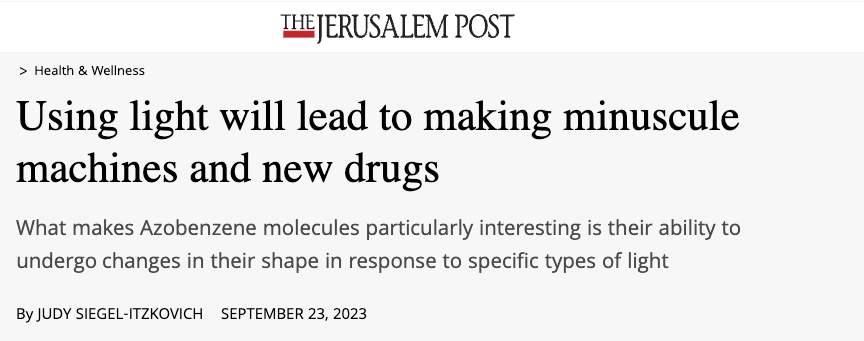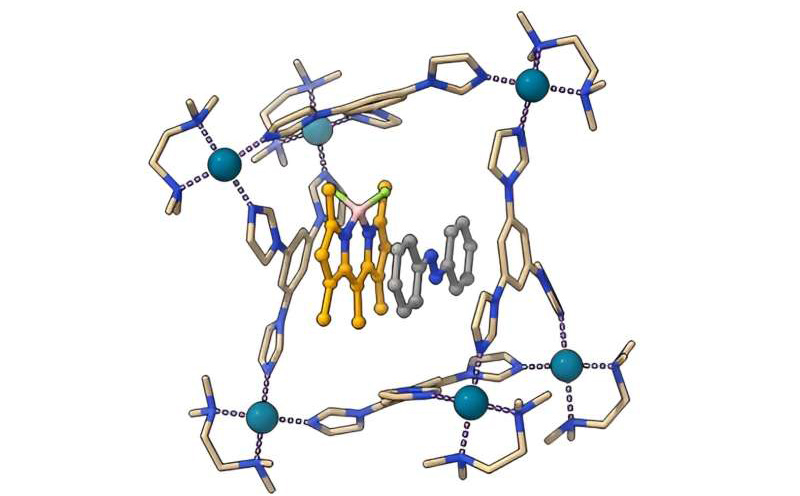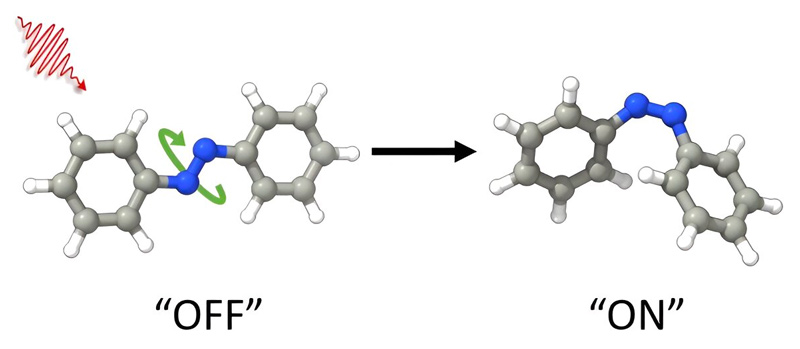

Making tiny machines and light-controllable drugs as well as improving existing technology will be possible thanks to a new discovery by scientists at the Hebrew University of Jerusalem (HU), the Weizmann Institute of Science in Rehovot and Tampere University in Finland.
The new discovery enables scientists to change the shape of very-versatile molecules called azobenzene using visible light that is more practical and safer than ultraviolet light (UV) that was used until now. They can molecule can switch between two different forms by light – but the two forms are in equilibrium, which means that a mixture present that prevents optimal use for applications. Being able to control them with visible light, including red wavelengths, and enrich only one form opens up new possibilities for these applications, making them more efficient and accessible.
However, a new approach promises to change the game. Prof. Igor Schapiro from HU, Prof. Rafal Klajn from Weizmann and the Institute of Science and Technology-Austria, and Arri Priimagi from Tampere and colleagues have introduced a novel concept called “disequilibration by sensitization under confinement” (DESC).

Exploring new horizons in science
This approach offers for the first time the possibility of prompting a specific molecular transformation, specifically the conversion from an “E” to a “Z” state that can be thought of as an “on” and “off” form for applications. This change can be triggered by visible light, including wavelengths in the red part of the visible spectrum.
The study, titled “Disequilibrating azobenzenes by visible-light sensitization under confinement” has just been published in the prestigious journal Science.

What makes Azobenzene molecules particularly interesting is their ability to undergo changes in their shape in response to specific types of light, including ultraviolet and visible light. This phenomenon, known as photoisomerization, allows azobenzenes to move between two distinct shapes or isomers, the “E” and “Z” isomers (compounds that have the same molecular formula but are structurally different).
This unique characteristic holds immense significance as it unlocks a diverse spectrum of applications spanning nanotechnology, data storage, drug delivery, materials science, and biological research. This makes azobenzenes pivotal elements in numerous scientific and technological advancements.
“Through our computational studies and quantum chemical calculations, we’ve illuminated the path to an innovative approach, which not only advances the fundamental field of azobenzene but also paves the way for practical applications. These applications harness the power of visible light, including red wavelength of light.” said Schapiro.